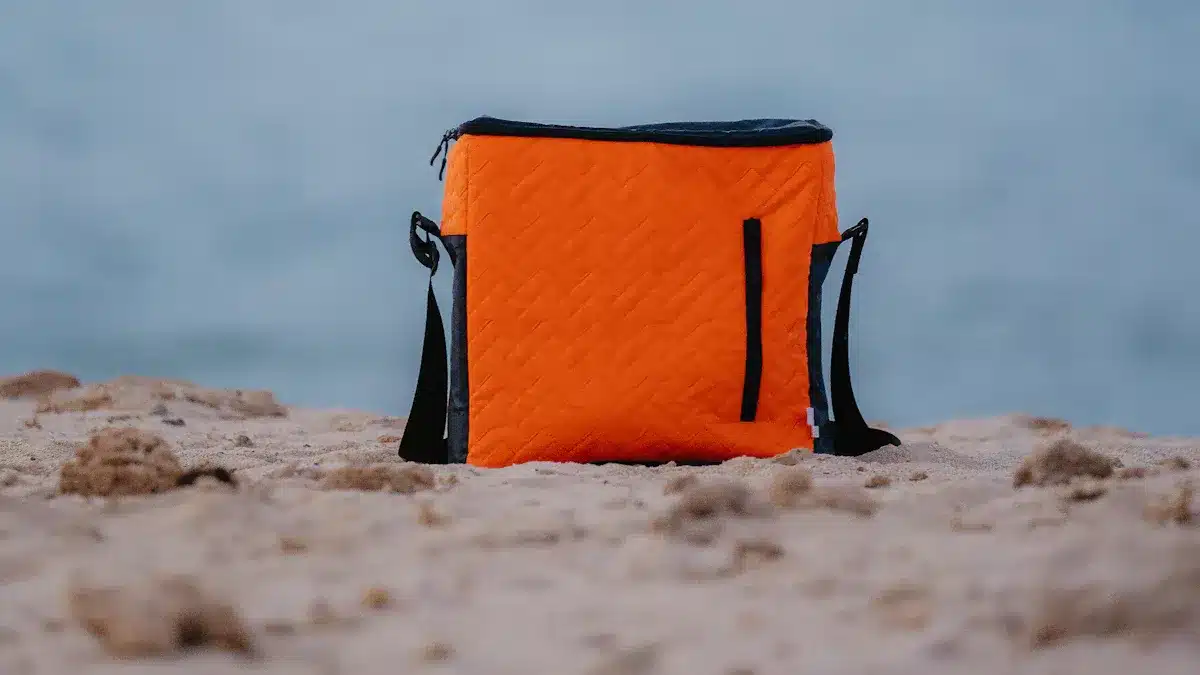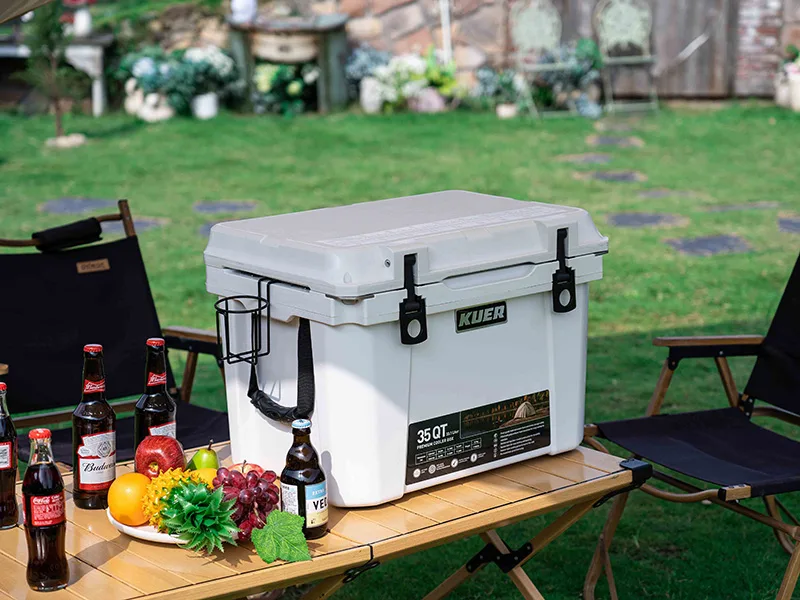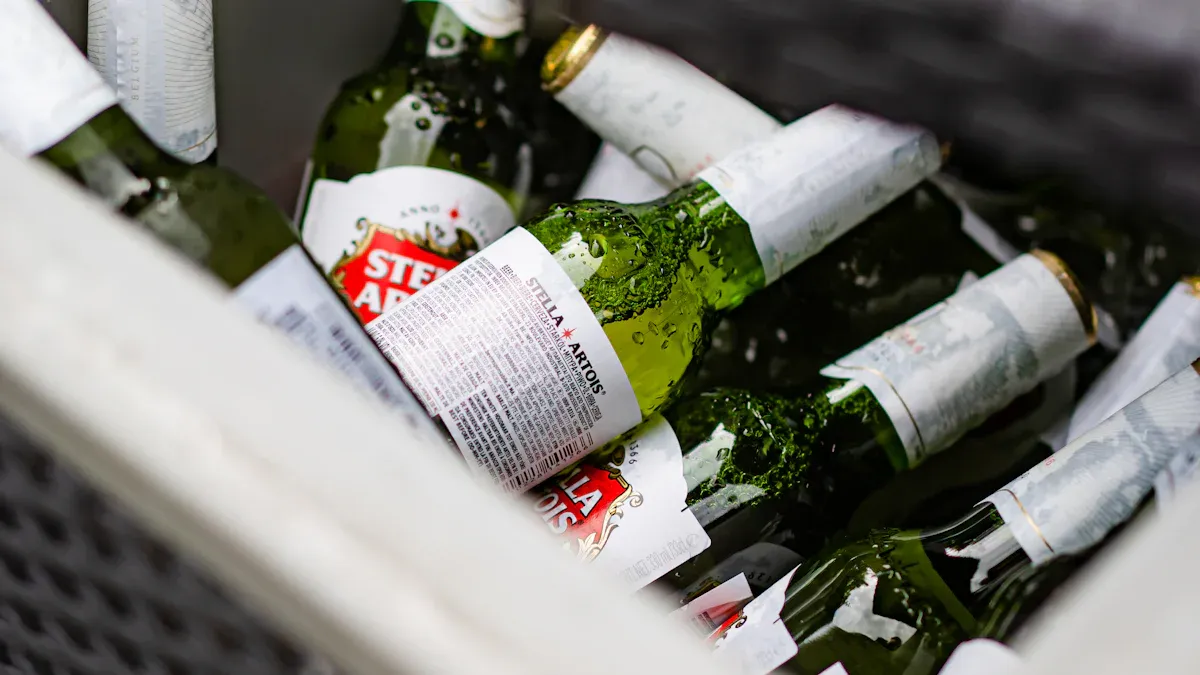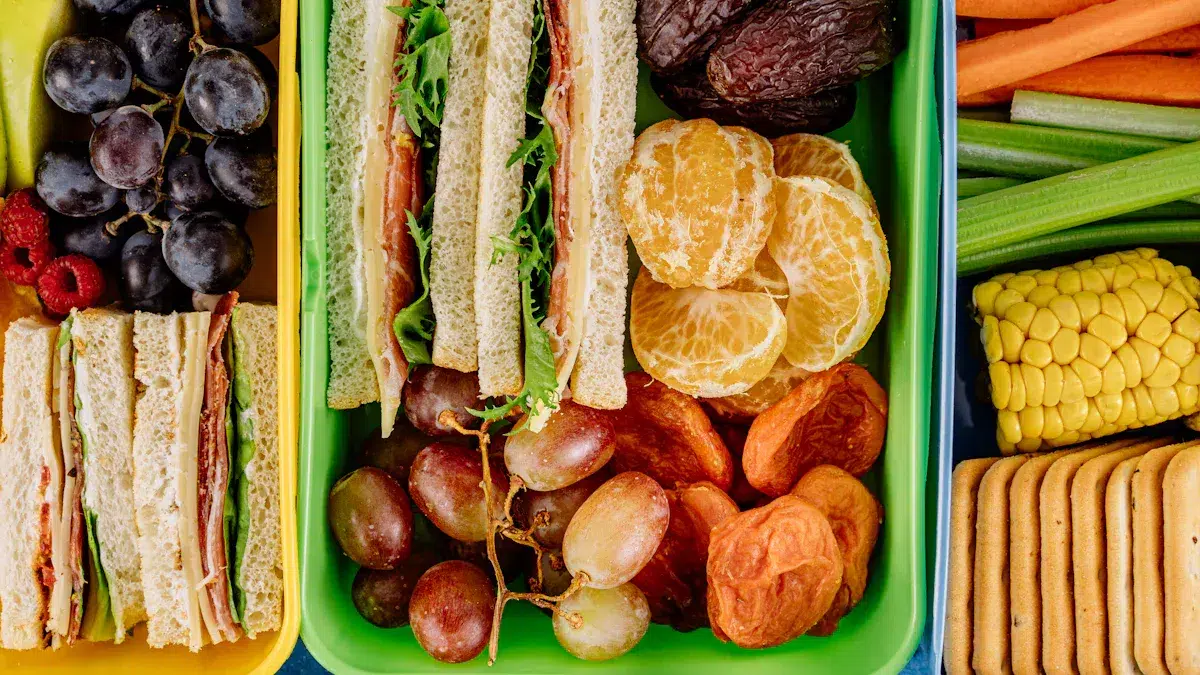

When it comes to packing your lunch, the right food cooler box can make all the difference. Whether you’re trying to keep your food cool or just need something sturdy, the choice between a soft cooler lunch bag and a traditional lunch box depends on your needs. Cooler bag lunch boxes are perfect for keeping your food fresh, especially if you’re packing meals for work, school, or the gym. Did you know that 38% of employed adults in cities rely on packed meals? That’s a lot of people who need reliable lunch solutions!
On the other hand, traditional lunch boxes offer simplicity and durability. If you’re someone who values a no-fuss option, this might be your go-to. With 64% of parents packing lunches daily for their kids, it’s clear that lunch boxes are a staple in many households. Whether you’re meal-prepping for the week or just packing a quick bite, the right lunch bag or box ensures your food stays safe and delicious.
Kuer, one of the leading cooler box manufacturers will provide you with a variety of cooler solutions.
Key Differences Between Cooler Bag Lunch Boxes and Traditional Lunch Boxes
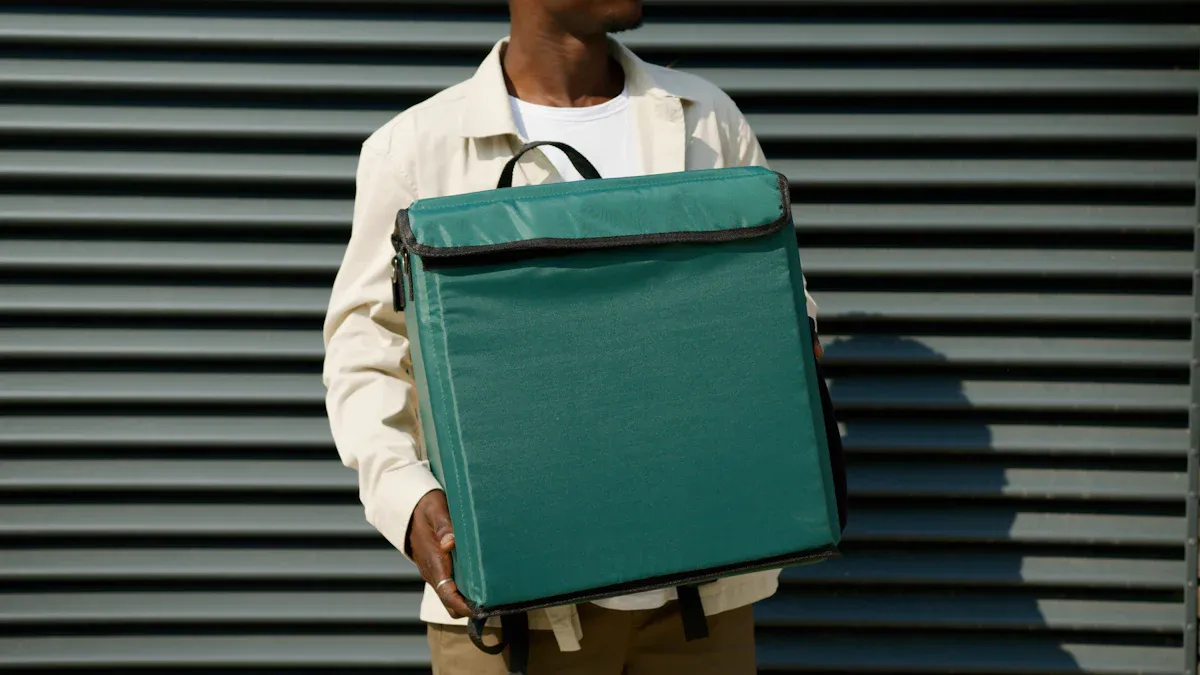
Insulation and Temperature Control
When it comes to keeping your food fresh, insulation plays a huge role. Cooler bag lunch boxes are designed with superior insulation, often using foam layers or insulated linings to maintain the right temperature. This makes them perfect for meals that need to stay cool, like salads or yogurt. Pairing them with ice packs can keep your food safe for hours, reducing the risk of spoilage. Studies show that insulated lunchboxes with ice packs are more effective at maintaining food safety compared to traditional options.
On the other hand, traditional lunch boxes don’t offer the same level of temperature control. They’re usually made from materials like metal or plastic, which lack the insulation needed to keep food cool or warm for long periods. If you’re packing non-perishable snacks or sandwiches, though, a traditional lunch box might still work for you.
Here’s a quick comparison of insulation effectiveness:
| Feature | Cooler Bag | Traditional Lunch Box |
|---|---|---|
| Temperature Retention | Up to 24 hours | Minimal |
| Safe Temp Duration | 14.5h (37.6-45.1°F) | Not applicable |
| Insulation | 2.33cm foam | None |
If you need to keep your lunch at a safe temperature for extended periods, cooler bag lunch boxes are the clear winner.
Materials and Durability
The materials used in lunch boxes and lunch bags greatly affect their durability. Cooler bag lunch boxes are typically made from flexible, insulated materials like polyester or nylon. These materials are lightweight and easy to carry, but they may not withstand heavy wear and tear over time. However, many insulated bags are designed with reinforced stitching and water-resistant exteriors, making them durable enough for daily use.
Traditional lunch boxes, on the other hand, are often made from hard plastic, stainless steel, or aluminum. These materials are incredibly sturdy and can handle rough handling, making them ideal for kids or outdoor activities. While they lack the flexibility of cooler bags, their rigid structure provides excellent protection for your food.
If you’re looking for something that can handle a bit of rough treatment, a traditional lunch box might be your best bet. But if you prioritize lightweight convenience, an insulated lunch bag could be the better choice.
Portability and Design
Portability and design are important factors when choosing between a lunch bag vs lunch box. Cooler bag lunch boxes often come with adjustable straps, handles, and compact designs that make them easy to carry. Some even have multiple compartments, so you can separate your snacks, drinks, and meals. Their lightweight nature makes them a favorite for commuters and gym-goers.
Traditional lunch boxes, while less flexible in design, offer simplicity. They’re usually box-shaped and may not have as many compartments or carrying options. However, their sturdy build ensures your food stays intact, even if the box gets tossed around in a backpack.
When it comes to design, cooler bags tend to offer more variety. You’ll find options in different colors, patterns, and sizes to suit your style. Traditional lunch boxes, while simpler, often have a classic appeal that some people prefer.
Tip: If you’re someone who values style and portability, go for an insulated lunch bag. But if you need something tough and straightforward, a traditional lunch box might be the way to go.
Maintenance and Cleaning
Keeping your lunch box clean is essential for food safety and longevity. But how easy is it to maintain a cooler bag lunch box compared to a traditional one? Let’s break it down.
Cooler Bag Lunch Boxes
Cooler bags are convenient, but they need a bit more attention when it comes to cleaning. Their soft, insulated interiors can trap spills and crumbs, which might lead to odors or stains if not cleaned properly. Here’s how you can keep your cooler bag fresh and hygienic:
- Daily Wipe-Downs: Use a damp cloth with mild soap to clean the inside after each use. This prevents food residue from building up.
- Deep Cleaning: For stubborn stains or odors, mix a solution of water and white vinegar. Wipe the interior thoroughly and let it air dry.
- Avoid Machine Washing: Most cooler bags aren’t machine washable. Check the care label to be sure, but hand cleaning is usually the safest option.
- Drying: Always let your cooler bag dry completely before storing it. A damp bag can develop mold or mildew.
Tip: To keep your cooler bag smelling fresh, place a small sachet of baking soda inside when not in use. It absorbs odors like magic! ✨
Traditional Lunch Boxes
Traditional lunch boxes, especially those made of hard plastic or metal, are generally easier to clean. Their rigid surfaces don’t absorb spills, making maintenance a breeze. Here’s what you need to do:
- Quick Rinse: After each use, rinse the box with warm water to remove food particles.
- Dishwasher-Friendly: Most traditional lunch boxes are dishwasher-safe. Just pop them in for a thorough clean. Always check the manufacturer’s instructions first.
- Tackling Stains: For plastic boxes, stains from sauces or oils can be tricky. A paste made from baking soda and water works wonders. Scrub gently and rinse.
- Drying: Make sure the box is completely dry before putting it away. This prevents any lingering moisture from causing issues.
Note: If your lunch box has rubber seals or gaskets, remove them for cleaning. These areas can trap food and bacteria if ignored.
Which One’s Easier?
If you’re looking for low-maintenance, traditional lunch boxes win the race. Their simple design and dishwasher compatibility make cleaning a no-fuss task. Cooler bags, while slightly more demanding, offer the benefit of insulation, which might outweigh the extra effort for some.
So, which one suits your lifestyle better? If you don’t mind a bit of extra care, a cooler bag is a great choice for keeping your meals fresh. But if you prefer something you can toss in the dishwasher, a traditional lunch box might be your best bet.
Advantages and Disadvantages of Cooler Bag Lunch Boxes
Benefits of Using a Cooler Bag Lunch Box
Cooler bag lunch boxes are a game-changer when it comes to keeping your food fresh. Thanks to their insulated design, they maintain the right temperature for hours. Whether you’re packing a salad, yogurt, or even a smoothie, these bags ensure your food stays cool and safe to eat. Laboratory tests show that some insulated bags, like those with closed-cell foam insulation, can retain cold temperatures for over 24 hours when paired with proper ice packs. That’s perfect for long workdays or outdoor adventures.
Another great feature is their versatility. Cooler bags come in various sizes, so you can pick one that fits your needs. Whether you’re packing a small lunch for work or a full meal for a picnic, there’s an option for you. Many models also include multiple compartments, making it easy to organize your food, drinks, and snacks.
Portability is another win. These bags are lightweight and often come with adjustable straps or handles, making them easy to carry. Even if you’re commuting or heading to the gym, a cooler bag lunch box won’t weigh you down. Plus, they’re stylish! With so many designs and colors, you can find one that matches your personality.
Lastly, cooler bags offer excellent value. They balance performance with affordability, giving you a reliable way to keep your food fresh without breaking the bank.
Drawbacks of Cooler Bag Lunch Boxes
While cooler bag lunch boxes have plenty of perks, they’re not without their challenges. One common issue is durability. Although many insulated bags are made with high-quality materials, some models may not withstand heavy use or accidental drops. If you’re rough on your lunch bag, you might notice wear and tear over time.
Another drawback is their weight. Larger models, especially those designed for picnics or group outings, can become cumbersome when fully packed. If you’re carrying a lot of food and ice packs, the bag might feel heavier than expected.
Space can also be a concern. While cooler bags come in different sizes, smaller models might not offer enough room for all your food and drinks. If you like packing a variety of items, you’ll need to choose your bag carefully.
Finally, price can be a factor. While most cooler bags are affordable, premium models with advanced insulation or extra features can cost more. However, the added benefits often justify the higher price.
Here’s a quick look at the pros and cons:
| Feature | Advantages | Disadvantages |
|---|---|---|
| Insulation performance | Keeps lunch cold for extended periods | May vary by model |
| Durability and materials | High-quality materials for daily use | Some models may not withstand drops |
| Capacity and size | Options for different needs (work, picnics) | Limited space in smaller models |
| Portability and comfort | Easy to carry for long durations | Heavier models can be cumbersome |
| Price and value | Balances performance with affordability | Higher price for premium features |
Despite these drawbacks, cooler bag lunch boxes remain a top choice for anyone who values fresh, safe food. With the right model, you can enjoy the benefits while minimizing the downsides.
Advantages and Disadvantages of Traditional Lunch Boxes
Benefits of Traditional Lunch Boxes
Traditional lunch boxes have been a reliable choice for decades, offering several practical benefits. One of their biggest advantages is durability. These lunch boxes are often made from sturdy materials like stainless steel, aluminum, or hard plastic. They can withstand daily wear and tear, making them perfect for kids or anyone with an active lifestyle. Durability tests, such as material and safety testing, confirm that these lunch boxes can handle rough handling while keeping your food safe.
Another benefit is their simplicity. Traditional lunch boxes are straightforward to use, with no need for extra accessories like ice packs. They’re ideal for packing non-perishable snacks, sandwiches, or dry foods. If you’re someone who prefers a no-fuss option, this might be your go-to.
Traditional lunch boxes also promote healthy eating. They’re great for carrying home-cooked meals, which can help you avoid unhealthy takeout options. For office workers, this means you can enjoy a nutritious lunch while saving money. Studies show that packing your own meals can cost as little as $3-7 per month, making it a budget-friendly choice.
Lastly, these lunch boxes are easy to clean. Most are dishwasher-safe, so you can simply toss them in for a quick wash. This convenience makes them a favorite for busy families and professionals.
Drawbacks of Traditional Lunch Boxes
While traditional lunch boxes have their perks, they’re not without flaws. One common issue is their lack of flexibility. Many models come with only two or three compartments, which might not be enough if you like packing a variety of foods. You may need to carry additional containers, which can be inconvenient.
Durability, while generally a strength, can sometimes be a concern. Some plastic lunch boxes may crack or warp with regular use, especially if exposed to high heat or heavy impacts. This means you might need to replace them more often than expected.
Another drawback is their limited ability to keep food fresh. Unlike insulated bags, traditional lunch boxes don’t maintain temperature. If you’re packing perishable items, you’ll need to eat them quickly or find a way to keep them cool. Without insulation or ice packs, your food might not stay safe for long.
Leak-proof capabilities can also be an issue. Some lunch boxes aren’t designed to hold liquids securely. If you’re carrying soups or sauces, you’ll need to keep the box upright to avoid spills. This can be a hassle, especially during commutes.
Here’s a quick look at some common drawbacks:
| Drawback | Description |
|---|---|
| Lack of Flexibility | Limited compartments may require additional containers for larger or varied meals. |
| Durability Concerns | Some materials may crack or warp with regular use, requiring frequent replacement. |
| Leak-Proof Capabilities | Not all models are leak-proof, making it tricky to carry liquids without spills. |
Despite these challenges, traditional lunch boxes remain a solid choice for those who value simplicity and durability. If you’re packing dry foods or non-perishables, they’re a dependable option.
Factors to Consider When Choosing Between Cooler Bag Lunch Boxes and Traditional Lunch Boxes
Lifestyle and Daily Routine
Your lifestyle plays a big role in deciding between a cooler bag lunch box and a traditional lunch box. Are you always on the move, or do you spend most of your day in one place? These questions can help you figure out what works best for you.
- Active Lifestyle: If you’re constantly on the go, a lightweight and compact lunch bag is your best friend. It’s easy to carry during commutes, outdoor activities, or even gym sessions. Plus, insulated bags keep your food fresh and cool, so you don’t have to worry about spoilage.
- Sedentary Lifestyle: If your day involves staying in one spot, like an office or classroom, a traditional lunch box might suit you better. Its sturdy design and better organization make it easier to enjoy your meal without any hassle.
Think about how you spend your day. If you’re juggling multiple activities, an insulated lunch bag offers the portability and convenience you need. But if you’re more stationary, a traditional lunch box provides durability and simplicity.
Dietary Needs and Food Preferences
What you eat matters just as much as how you carry it. Your dietary habits can influence whether a cooler bag or a traditional lunch box is the right choice.
Take a look at this table to see how dietary preferences vary across regions:
| Study Location | Findings on Discretionary Foods | Findings on Core Foods |
|---|---|---|
| Australia (Primary Schools) | Average lunchbox contains 3.1 serves of discretionary foods | Only 14% contained a piece of fruit |
| U.K. | 52–60% of lunchboxes contained discretionary snacks | 1.6% met nutritional standards |
| California (Pre-school) | Over 80% contained discretionary foods | Only 16% included vegetables |
If your meals include perishable items like salads, yogurt, or smoothies, an insulated lunch bag is a must. It keeps your food at the right temperature, especially when paired with ice packs. On the other hand, if you prefer non-perishable snacks or sandwiches, a traditional lunch box works just fine.
Tip: If you’re meal-prepping for the week, insulated bags are perfect for keeping your food fresh. They’re also great for separating snacks, drinks, and meals with their multiple compartments.
Budget and Cost Considerations
Your budget is another important factor. Cooler bag lunch boxes and traditional lunch boxes come in a range of prices, so there’s something for everyone.
Here’s a breakdown of market trends that might influence your choice:
| Market Driver | Description |
|---|---|
| Growing Health Consciousness | More people prefer homemade meals, which makes lunch boxes and insulated bags essential. |
| Rising Demand for Convenience | Busy lifestyles call for practical and portable meal solutions. |
| Increased Adoption of Sustainable Practices | Eco-friendly products are becoming more popular. |
| Trend of Meal Prepping | Insulated bags help maintain freshness for prepped meals. |
| Expansion of the On-the-Go Lifestyle | Portable food solutions are in high demand for work and outdoor activities. |
If you’re looking for an affordable option, traditional lunch boxes are usually less expensive. They’re simple and durable, making them a great choice for families or anyone on a tight budget. However, if you’re willing to spend a bit more, insulated bags offer added benefits like temperature control and stylish designs.
Note: Investing in a high-quality lunch bag or box can save you money in the long run. It reduces the need for takeout and helps you stick to a healthier, more cost-effective meal plan.
Environmental Impact and Sustainability
When choosing between a cooler bag lunch box and a traditional lunch box, it’s worth thinking about their impact on the environment. After all, the way we pack our meals can either help or harm the planet. So, how do these options stack up when it comes to sustainability?
Cooler bag lunch boxes, especially reusable ones, are gaining popularity among eco-conscious consumers. These bags offer a practical alternative to disposable plastic bags, which often end up in landfills or polluting oceans. By switching to a reusable insulated lunch bag, you’re not just keeping your food fresh—you’re also reducing single-use waste. This small change can make a big difference over time.
Some cooler bags go a step further by using recycled materials like RPET (Recycled Polyethylene Terephthalate). These bags promote a circular economy by giving new life to old plastic bottles. They also help cut down on waste and reduce the demand for virgin plastic. On the other hand, traditional plastic bags, often made from non-renewable resources, contribute to pollution and climate change. Unlike cooler bags, they’re not biodegradable and can linger in the environment for hundreds of years.
Here’s a quick look at how these options compare:
- Reusable insulated lunch bags: Reduce single-use waste and support sustainable practices.
- RPET cooler bags: Made from recycled materials, they lower the ecological footprint and promote recycling.
- Traditional plastic bags: Derived from non-renewable resources, they contribute to long-term pollution and environmental damage.
Traditional lunch boxes, especially those made from durable materials like stainless steel, also have their green benefits. They’re built to last, which means you won’t need to replace them often. This durability reduces waste and makes them a sustainable choice for anyone looking to minimize their environmental impact. However, some plastic lunch boxes may not be as eco-friendly, especially if they’re made from non-recyclable materials.
If you’re serious about sustainability, consider how long your lunch container will last and what it’s made of. Reusable insulated bags and durable lunch boxes both offer eco-friendly solutions, but the key is to choose one that aligns with your values and lifestyle. By making thoughtful choices, you can enjoy your meals while doing your part to protect the planet.
Tip: Look for lunch bags or boxes labeled as eco-friendly or made from recycled materials. These options not only help the environment but also support companies committed to sustainability.
Choosing between a cooler bag lunch box and a traditional lunch box depends on what you need most. If keeping your food fresh and cool is your priority, a cooler bag lunch box is the way to go. It’s perfect for meals that need ice packs to stay safe and delicious. On the other hand, traditional lunch boxes shine when you want something durable and simple. They’re great for packing dry snacks or sandwiches.
Think about your daily routine and the type of food you pack. Do you need a lunch bag that’s portable and stylish? Or do you prefer a sturdy lunch box that’s easy to clean? Your budget matters too. Both options offer great value, so pick the one that fits your lifestyle.
No matter what you choose, the right lunch solution makes your meals more enjoyable. Whether it’s a cooler bag lunch box or a traditional lunch box, you’ll have a reliable way to carry your food wherever you go.
FAQ
What’s the best way to keep food fresh in a lunch bag?
To keep food fresh, use ice packs inside your lunch bag. Place perishable items like yogurt or salads near the packs. Choose a bag with good insulation to maintain the temperature for hours. Always seal containers tightly to prevent spills.
Can I use a traditional lunch box for hot meals?
Yes, but it depends on the material. Stainless steel lunch boxes work well for hot meals. For better heat retention, wrap the box in a towel or use an insulated sleeve. However, a lunch bag with thermal lining might be more effective for keeping food warm.
How do I clean a lunch bag properly?
Wipe the interior with a damp cloth and mild soap after each use. For stubborn stains, mix water with vinegar and scrub gently. Let the bag air dry completely before storing it. Avoid machine washing unless the care label says it’s safe.
Are cooler bags better for meal prepping?
Absolutely! Cooler bags are ideal for meal prepping. They keep prepped meals fresh and safe, especially if you’re packing for multiple days. Their compartments also help organize meals, snacks, and drinks efficiently. Pair them with ice packs for optimal freshness.
Which option is more eco-friendly: a lunch bag or a traditional lunch box?
Both can be eco-friendly if reusable. Lunch bags made from recycled materials reduce waste, while durable traditional lunch boxes last for years. Avoid single-use containers to minimize environmental impact. Choose a product that aligns with your sustainability goals.

